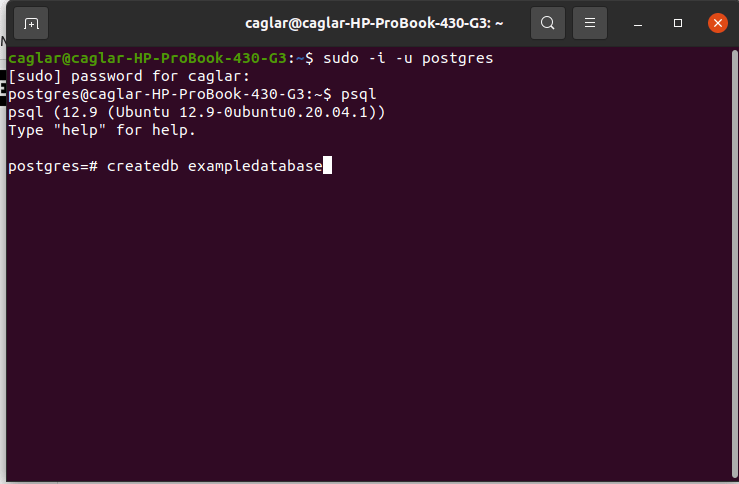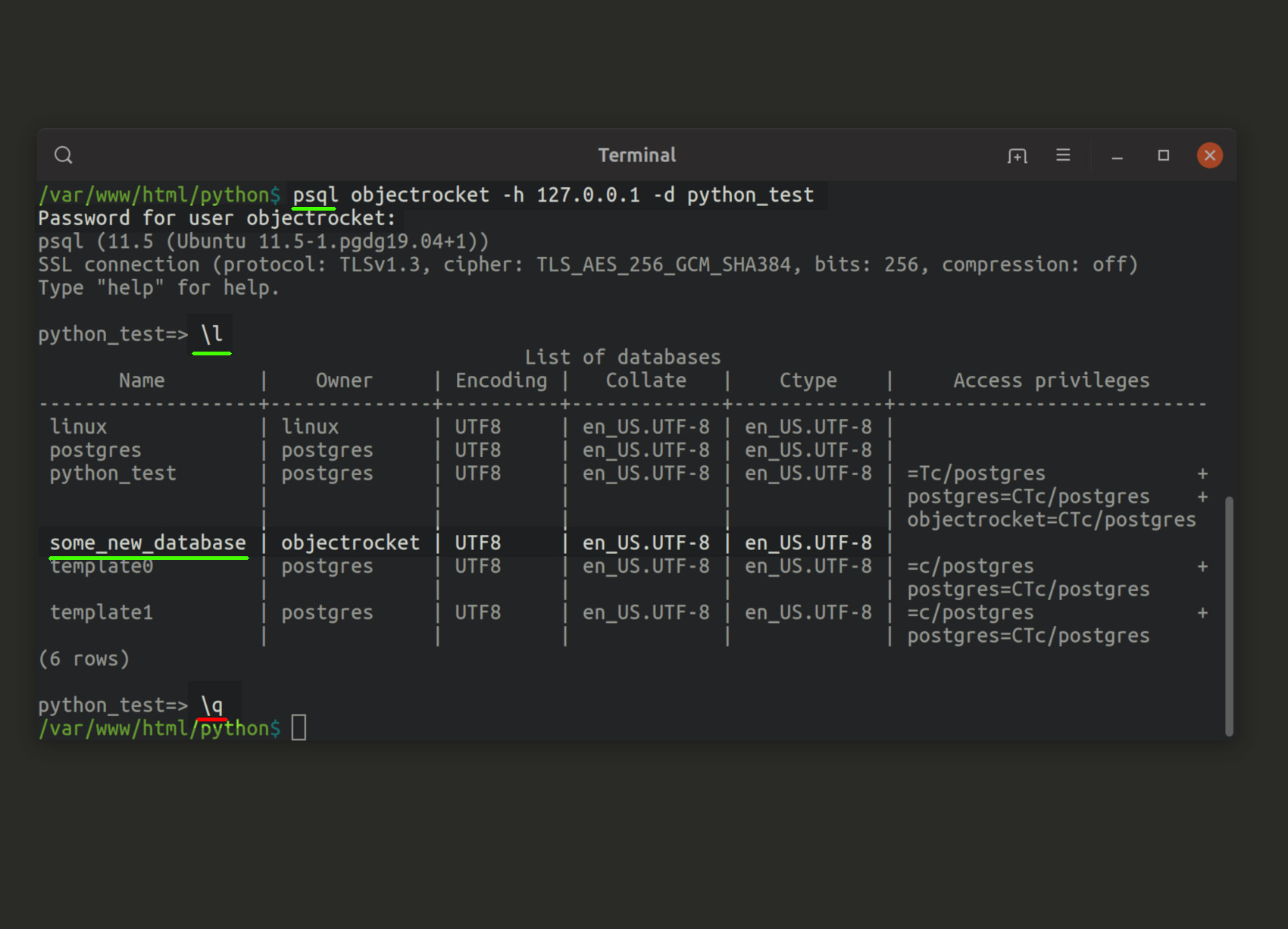Antwort How to create a database in PostgreSQL in Linux? Weitere Antworten – How to create a database in postgres Linux
How to Create a Postgres Database From Command Line
- Step 1: Launch psql.
- Step 2: Check Available/Existing Databases.
- Step 3: Create a Database Using Postgres Default CLI.
- Step 4: Confirm Database Creation.
- Step 1: Access Postgres' Bin Directory.
- Step 2: Create Database.
- Step 3: Confirm Database Creation.
To start the PostgreSQL server on Linux, perform the following steps:
- Go to. <Secure Agent installation directory>/apps/process-engine/data/db/util. .
- Run the following script: server_start.sh. If you do not use the default 5432 port, you must pass the port number as an argument as follows: server_start.sh <port_number>
createdb creates a new PostgreSQL database. Normally, the database user who executes this command becomes the owner of the new database. However, a different owner can be specified via the -O option, if the executing user has appropriate privileges.
How to create a database user in PostgreSQL : How to create a user in PostgreSQL: Step-by-step
- Step 1: Install PostgreSQL.
- Step 2: Connect to PostgreSQL using psql.
- Step 3: Create a user.
- Step 4: Set role attributes.
- Step 5: Switching to the new user.
How to create new database in Linux
Configure the data source.
- Open the odbc. ini file with a text editor. This file is usually stored in the /etc directory.
- Add the data source name in square brackets. The name can be any string. For example: [MySQL_1]
- Under the data source name, set the following parameters. Parameter.
- Save and close the file.
How to create a database using Linux : Also all the commands used in this tutorial will be in the video description. First we need to get connected to my sequel. My sequel – you root – B I'm utilizing the root user in this instance.
Configure the data source.
- Open the odbc. ini file with a text editor. This file is usually stored in the /etc directory.
- Add the data source name in square brackets. The name can be any string. For example: [PostgreSQL_1]
- Under the data source name, set the following parameters. Parameter.
- Save and close the file.
Type psql -U postgres at the prompt, and hit Enter. Here, postgres represents the username of the database superuser. You will be asked for a password. Enter the password you had specified during the installation.
How to create new database
Create a database without using a template
- On the File tab, click New, and then click Blank Database.
- Type a file name in the File Name box.
- Click Create.
- Begin typing to add data, or you can paste data from another source, as described in the section Copy data from another source into an Access table.
You can create a new table by specifying the table name, along with all column names and their types: CREATE TABLE weather ( city varchar(80), temp_lo int, — low temperature temp_hi int, — high temperature prcp real, — precipitation date date ); You can enter this into psql with the line breaks.Create a database on the Cloud SQL instance
- In the Google Cloud console, go to the Cloud SQL Instances page.
- To open the Overview page of an instance, click the instance name.
- Select Databases from the SQL navigation menu.
- Click Create database.
- In the New database dialog, specify the name of the database.
- Click Create.
Create a blank database
On the File tab, click New, and then click Blank Database. Type a file name in the File Name box. To change the location of the file from the default, click Browse for a location to put your database (next to the File Name box), browse to the new location, and then click OK. Click Create.
How to create a database in terminal : Create a Database in MySQL Using the Command Line
- Step 1: MySQL Command Line Client Installation.
- Step 2: Access the MySQL Shell.
- Step 3: Log Into the MySQL Server and Check Existing Databases.
- Step 4: Create a MySQL Database Using the Command Line.
- Command 1: Check and Create a Database.
How to create database in PostgreSQL in Ubuntu terminal : Creating a PostgreSQL Database
- Step 1: Login as the Postgres User.
- Step 2: Enter the PostgreSQL Environment.
- Step 3: Create the Postgres Database.
How to start PostgreSQL server in terminal
If you are in Windows
- Go to the bin directory of your postgres installation (in my case it's located in "c:/programms/postgresSql/bin")
- Open a command prompt (CMD) and execute the following command: pg_ctl -D "D:\PSG_SQL\data" restart.
Connect to a PostgreSQL database
- sudo apt-get install postgresql-client.
- sudo yum install postgresql.
- psql -h <hostname> -U <username> -d <database_name>
- psql -h localhost -U postgres -d mydatabase.
- psql -h <hostname> -p <port> -U <username> -d <database_name>
- psql -h example.com -p 5432 -U postgres -d mydatabase.
Create a database without using a template
- On the File tab, click New, and then click Blank Database.
- Type a file name in the File Name box.
- Click Create.
- Begin typing to add data, or you can paste data from another source, as described in the section Copy data from another source into an Access table.
How do I manually create a database : Manual Database Creation
- Copy pfile from any other database server and rename it to new database SID other database pfile initproddb.ora change the file name to reflect new SID initdevdb.ora.
- Open the initdevdb.ora file, find and replace all old SID (proddb) with new SID (devdb).





